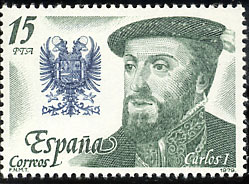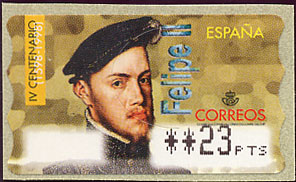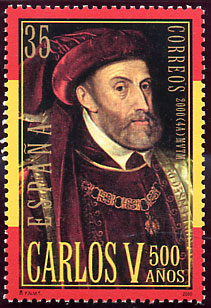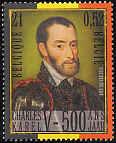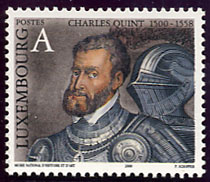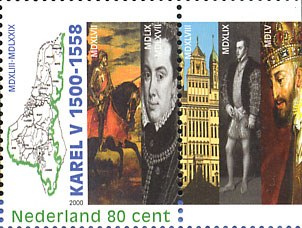|
|
<
La dynastie des Habsbourg, maison qui régna sur
le Saint Empire romain germanique (1273 - 1291 ; 1438 - 1740 ; 1765 -
1806), l'Autriche (1278 - 1918), l'Espagne (1516 - 1700), ainsi que sur
la Bohême et la Hongrie (1526 - 1918), a été au centre de recherche de
nombreuses écoles dentaires du fait des cas de malformations dentaires
récidivantes.
Parmi les caractéristiques des Habsbourg on remarque la protrusion
mandibulaire, une lèvre inférieure accentuée et un nez proéminent.
Ces déformations faciales sont d'un grand intérêt pour ceux qui étudient
le facteur causal des malocclusions.
Les portraits et les sculptures de cette famille ont été étudiés par des
généticiens et des orthodontistes.
Les nombreux mariages consanguins ne facilitent pas la tâche.
Le profil proéminent de la mâchoire est très
bien documenté sur ces timbres réalisés d'après des tableaux de peintres
célèbres.
The great Emperor Charles V was born in Ghent in 1500. He was the eldest son of Philip the Fair, the Habsburg leader who also ruled the Burgundian realm that included Luxembourg and the Low Countries. His mother was Juana of Spain, daughter of the monarchs Ferdinand of Aragon and Isabella of Castile who are most famous to history for funding the voyages of Columbus to the New World.
Before the age of 20, Charles was to receive an incredible legacy. Upon his father's death in 1506 he inherited the Burgundian realm; in 1516, on the death of Ferdinand, he received the vast possessions of Spain, including Castile, Aragon, Sicily, Naples, the New World of America, and the Indies; and in 1519, upon the death of his grandfather Maximilian, he added the Habsburg territories (Bohemia, Hungary, and the Austrian duchies). In the end, Charles dominated all of central Europe, half of western Europe, and a good part of the New World.
Charles is known to Spain as King Carlos I but is better known to history as Emperor Charles V or Charles Quint. Under his rule, and the rule of his son and successor Philip II, Spain dominated Europe for most of the 16th century and accumulated incredible wealth by exploiting its possessions in North and South America.
Charles' accession marked the end of Burgundian rule in Luxembourg and the start of the period of Spanish domination that would last almost 200 years. Charles V, though technically a Burgundian, was molded by the influential court of Spain and it was this court's policies that steered Luxembourg through the 16th century and most of the 17th century.
Charles V abdicated in 1555 and died three years later.
